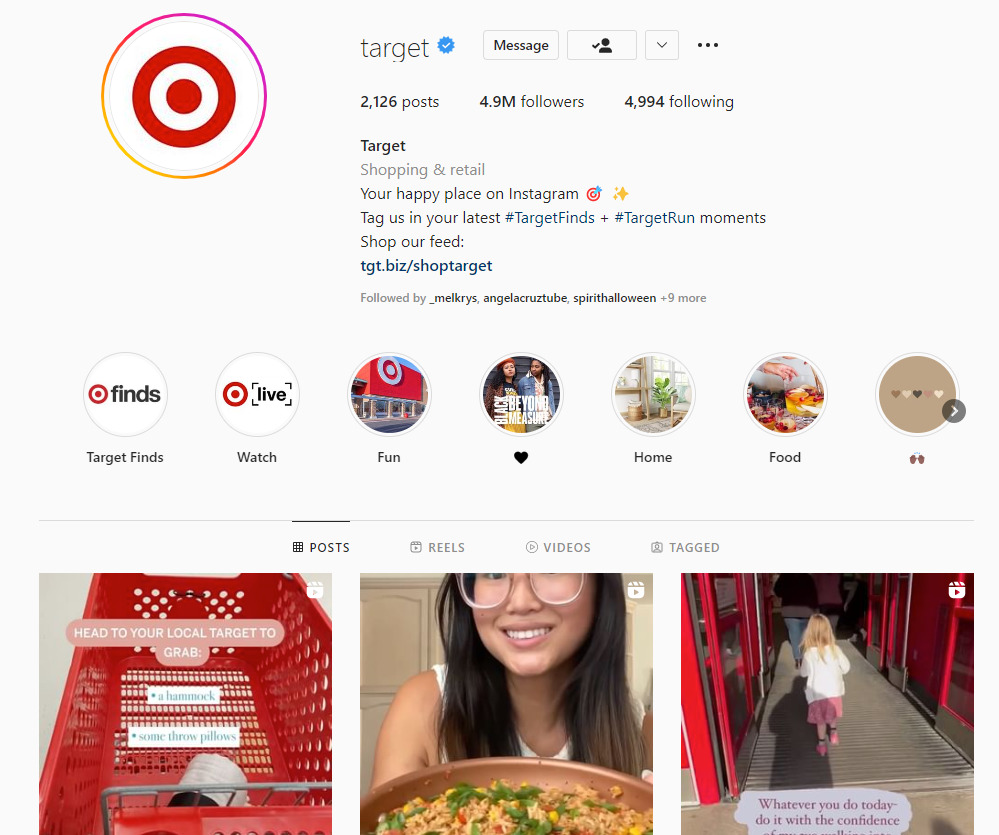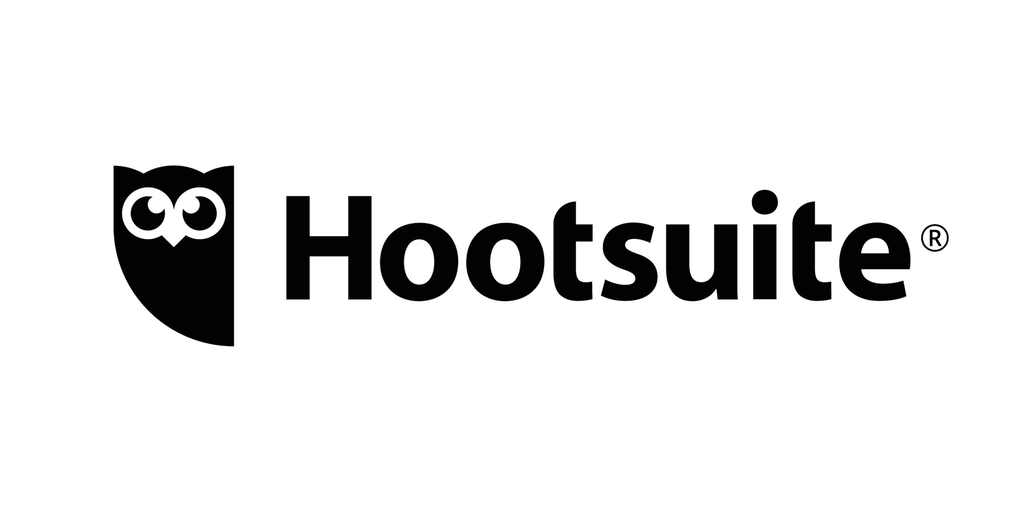Hashtags are a great way to boost your American business. By using relevant hashtags, you can connect with new customers and increase brand awareness. In this blog post, we’ll outline the best hashtags to use for your business, and provide tips on how to create a hashtag strategy that works for you. Let’s get started!
“Think about what people are doing on Facebook today. They’re keeping up with their friends and family, but they’re also building an image and identity for themselves, which in a sense is their brand. They’re connecting with the audience that they want to connect to. It’s almost a disadvantage if you’re not on it now.” — Mark Zuckerberg, Co-founder, and CEO of Meta
The history behind hashtags on Instagram
Hashtags started being used in 2011. At first, they were used to group photos together by topic, but as time went on, people started using them to follow specific topics and conversations. Now, hashtags are an important part of the Instagram experience and are often used to discover new content.
Hashtags are a great way for American businesses to connect with customers on Instagram. By using hashtags, businesses can target specific customers and reach a wider audience. Additionally, hashtags can help businesses track the effectiveness of their marketing campaigns.
If you’re not sure how to use hashtags, or which ones to use, start by doing a search on social media for keywords related to your topic. You’ll quickly see which hashtags are being used most often. Keep in mind that popular hashtags will be used by many people, so you’ll need to stand out from the crowd. Use hashtags creatively, and don’t be afraid to experiment.
How do they work?
Hashtags play a huge role in American business growth. They help businesses to increase their following and subsequently, their sales. By adding hashtags to your posts, you are making it easier for potential customers to find your business. Additionally, using popular hashtags will help your post to be seen by more people.
While there are many benefits to using hashtags, it is important to use them wisely. Using irrelevant hashtags can actually hurt your business. When using hashtags, be sure to keep them relevant to your business.
Hashtags are a powerful tool that should not be overlooked by businesses. By using them wisely, you can help your business to grow and reach new customers.
If you’re promoting a brand or product on social media, hashtags can be a great way to connect with potential customers. Use hashtags that are relevant to your industry, and keep an eye on trending hashtags that might be related to your business. By using relevant hashtags, you’ll be more likely to reach people who are interested in what you have to offer.
Why should businesses be using hashtags on social media platforms like Instagram?
When businesses use hashtags on Instagram, they are able to tap into a massive, engaged community of users who are interested in the products and services that they offer. Hashtags allow businesses to connect with potential customers who might not have otherwise been aware of their brand or products. Additionally, hashtags can help businesses track the performance of their social media campaigns and gauge the level of engagement from their target audience.
Here are some tips for using hashtags effectively:
Research your hashtags
Before using any hashtags, it’s important to do some research to see which ones are most relevant to your business and will reach the largest number of potential customers. There are a few different ways to research hashtags:
- Use Instagram’s search function: Type in a keyword relevant to your business (e.g., “clothing”) and see which hashtags come up. You can also click on any of the related hashtags to see more options.
- Look at what your competitors are using: Check out the hashtags that your competitors are using and see if there are any that you could be used as well.
- Use a hashtag research tool: There are a number of tools, like Hashtagify, that can help you find the most popular and relevant hashtags for your business.
Use hashtags in your bio
In addition to using hashtags in your posts, you can also use them in your bio. This is a great way to let potential customers know what kinds of products or services you offer and help them find your account.
Target is a great example of using Hashtags in their bio where they have a hashtag #TargetFinds and #TargetRun for their followers and customers to connect with them.


The power of using hashtags
Hashtags are a powerful tool for connecting with others on social media. By using hashtags, you can join conversations that are already happening, and start new ones. Hashtags can be used to promote your brand, raise awareness for a cause, or simply connect with others who share your interests.
If you’re not sure how to use hashtags, or which ones to use, start by doing a search on social media for keywords related to your topic. You’ll quickly see which hashtags are being used most often. Keep in mind that popular hashtags will be used by many people, so you’ll need to stand out from the crowd. Use hashtags creatively, and don’t be afraid to experiment.
How can businesses create their own unique hashtags for branding purposes?
When it comes to branding, businesses need to find a way to stand out from the competition. One way to do this is by creating your own unique hashtags. This can be a great way to connect with customers and promote your brand or product.
To create a unique hashtag follow these two steps:
- Come up with a catchy phrase or motto that reflects your brand.
- Then, add the hashtag symbol (#) in front of it. For example, if your brand is all about being unique, you could use the hashtag #BeDifferent.
Make sure to promote your new hashtag on all of your social media channels and encourage customers to use it when they share content related to your brand. You can also run social media campaigns and offer discounts or prizes to customers who use your hashtag.
By taking the time to create a unique hashtag, you can reach new customers and promote your brand in a fun and creative way.
What are some tips for using hashtags effectively in a business context?
When it comes to using hashtags for business, there are a few things to keep in mind.
- First, make sure that your hashtag is relevant to your brand or product. It’s also important to make sure that your hashtag is easy to remember and easy to type.
- Secondly, another thing to keep in mind is that you should use hashtags that are on a similar topic in some way. Using too many hashtags that aren’t on a similar topic can confuse a lot of social media algorithms. An example: you’re looking to make a post on Instagram about a new collection of jeans, use hashtags related to fashion, jeans, and your brand. Don’t use hashtags about hats, shoes, or jewelry. Instagram will get confused about who you’re trying to target and will not push your post to potential clients.
- Finally, it’s important to monitor your hashtag usage and see how it’s performing. Keep an eye on how many people are using your hashtag and what kinds of conversations are being had.
If you notice that your hashtag isn’t performing as well as you’d like, make changes as needed.
Which hashtags are most relevant to American businesses right now, and why?
Some popular American hashtags for businesses that have been successful include #smallbusiness, #startup, #entrepreneur, and #business. These hashtags are often used to share tips, advice, and insights about running a business. They can also be used to find potential customers and partners.
If you’re an American business ensure you follow these two tips:
- Use relevant keywords. When choosing hashtags, include relevant keywords that describe your business or products/services. This will help potential customers and partners find you more easily.
- Monitor your hashtags. Once you start using hashtags, be sure to monitor them regularly. This will help you see what’s working and what’s not, and make necessary adjustments.
Hashtags are a powerful tool that can help businesses promote themselves on social media. When used correctly, they can help you reach a wider audience, start conversations, and drive engagement. Follow these tips to make the most of hashtags for your business.
Stay Local
Small businesses in America should focus on local hashtags because they can help to create a community of customers and potential customers who are interested in what the business has to offer. Local hashtags can also help businesses to connect with other businesses in the area, which can lead to opportunities for collaborations and partnerships. Additionally, using local hashtags can help to increase the visibility of a business on social media, which can result in more followers and potential customers.
When using local hashtags, it is important to remember to use relevant and popular hashtags that are specific to your location. Additionally, it is important to use hashtags that are not too niche or obscure, as this can make it difficult for people to find your business. Finally, it is important to use a mix of hashtags, including both branded and general hashtags, to reach the widest possible audience.
Focus on your city’s hashtags
Small businesses need to focus on their city’s hashtags in order to connect with their customers and promote their products and services. By using local hashtags, businesses can reach out to people who are interested in what’s happening in their city and who may be looking for recommendations for local businesses. Additionally, using local hashtags can help businesses connect with other local businesses and build relationships that can lead to referrals and partnerships.
Some examples of popular city hashtags include:
#nyc– New York City
#losangeles – Los Angeles
#houston – Houston
#seattle – Seattle
#chicago – Chicago
Businesses should also search for city-specific hashtags that are specific to their industry. For example:
A restaurant in Los Angeles might use the hashtag #losangelesrestaurants to connect with potential customers.


A clothing store in New York City might use the hashtag #nycfashion to reach out to people interested in fashion.


How often should businesses be changing up their hashtags to stay current and relevant?
Businesses should be changing up their hashtags frequently in order to stay current and relevant. If you’re not using the latest hashtags, you’re likely to miss out on potential customers.
Additionally, it’s important to keep an eye on how your hashtags are performing. If you notice that one of your hashtags isn’t doing well, don’t be afraid to ditch it and try something new.
Finally, remember that you don’t need to use a ton of hashtags. A few well-chosen hashtags will do the trick. So, focus on quality over quantity.
Strategy
Hashtags can be a great way to increase brand awareness and connect with customers on social media. However, if you’re not using them effectively, you could be doing more harm than good. Here are a few tips for businesses on how often they should update their hashtag strategy:
- Update your hashtags regularly.
If you’re not using the same hashtags all the time, you’re missing out on potential customers and followers. Keep your hashtags relevant to your brand and business goals, and update them regularly to ensure you’re reaching the right people.
- Do some research.
Before you start using a new hashtag, do some research to see if it’s being used by others and if it’s relevant to your audience. You don’t want to use a hashtag that’s already being used by someone else, or one that isn’t relevant to your brand.
- Be consistent.
Once you’ve chosen the right hashtags for your business, be consistent in using them. Inconsistent hashtag usage can be confusing for customers and make it difficult for them to find your content.
- Monitor your results.
Pay attention to the results you’re getting from your hashtags. Are they helping you reach more customers? Are people using them to engage with your brand? If not, it may be time to reassess your strategy.
- Have fun!
Hashtags are a great way to connect with customers and promote your brand. But at the end of the day, they should be fun too! Don’t take yourself too seriously – have fun with your hashtags and let your personality shine through.
How do you measure the success of using hashtags on social media?
When it comes to measuring the success of using hashtags on social media, businesses can look at a variety of metrics.
- One way to measure success is by looking at how many people have clicked through to your content from the hashtag.
- Another way to measure success is by monitoring the conversation around your hashtag. If you notice that people are talking about your hashtag in a positive way, that is a good sign that it is successful.
- Finally, you can also measure the success of your hashtag by looking at how many people are using it. If you see a lot of people using your hashtag, that means it is likely to be successful.
Ways To Measure


One way to measure how many people clicked through to your content from hashtags is by using a tool like Hashtagify.
- This tool allows you to see how popular a particular hashtag is and how it is being used. By using this tool, you can see which hashtags are the most popular and which ones are the best for your business. Additionally, you can use this tool to measure the success of your hashtag over time.


Another way to measure the success of using hashtags on social media is by looking at the conversation around your hashtag. You can use a tool like Hootsuite Insights to track the conversation around your hashtag.
- This tool allows you to see how many people are talking about your hashtag and what they are saying. Additionally, you can use this tool to monitor the sentiment around your hashtag. If you see a lot of negative sentiment, that might be a sign that your hashtag is not successful.
- You can also measure the success of using hashtags by looking at how many people are using them. You can use a tool like Topsy to see how many people are using a particular hashtag.
- By using this tool, you can see which hashtags are the most popular and which ones are the best for your business. Additionally, you can use this tool to measure the success of your hashtag over time.
The pros of using hashtags
The pros of using hashtags are that they can help businesses connect with customers, promote their brand or product, and stay current and relevant. Additionally, hashtags can help businesses monitor how their content is performing. By using the right hashtags, businesses can reach a larger audience and increase brand awareness.
In addition to connecting with your target audience and brand awareness, niche hashtags can also help you stand out from the competition. With so many businesses competing for attention on social media, it’s important to find ways to make your brand stand out. Using niche hashtags can be a great way to do this.
The cons of using hashtags
Like anything, there are also some risks associated with using hashtags. One risk is that businesses could be inadvertently promoting a competitor by using their hashtag (that is why we highly recommend you do your research). Another risk is that businesses could use too many hashtags that are all completely different topics and confuse social media algorithms.
When used correctly, hashtags can be a powerful way for businesses to reach new customers and promote their brands. However, there are some risks associated with using hashtags, so businesses should be aware of these before they get started.
High volume vs. low volume hashtags
When it comes to using hashtags on social media, businesses should use a mix of high volume and low volume hashtags.
High volume hashtags
High-volume hashtags are an excellent technique to reach a large number of individuals and have your material seen by more people. However, you don’t want to use too many high-volume hashtags because social media algorithms will be confused, and potential customers are less likely to see your content.
Low volume hashtags
Hashtags that have low volume are a great way to reach a specific group of people. For example, if you’re a business that sells products for dogs, you might use the hashtag #doglovers. This hashtag has low volume, but it’s a good way to reach people who are interested in dogs.
You can also utilize a combination of high-volume and low-volume hashtags. For example, you might use the hashtag #pizzalovers and the hashtag #pizza to increase your reach while simultaneously targeting those interested in pizza restaurants.
Don’t forget about niche hashtags
Niche hashtags can help American businesses connect with their target audiences on a deeper level. When businesses use niche hashtags correctly, they can create a community of people who are interested in what they have to say. This community can help businesses spread the word about their products and services, and can also help them get feedback from customers.
They can also help businesses connect with influencers who can help them promote their products and services. By using niche hashtags, businesses can reach out to influencers who are interested in what they have to say. This can help businesses get their products and services in front of a larger audience, and can also help them get more exposure for their brand.
How many hashtags should you use for each social media platform to reach your target audience?
- Instagram: You should use at least 11-20 hashtags on Instagram to be successful.
- Facebook: To be successful on Facebook, you should use at least 6 hashtags.
- LinkedIn: You should use at least 5 hashtags on LinkedIn to be successful.
- Twitter: You should use at least 3 hashtags on Twitter to be successful.
- Tik Tok: You should use at least 5 hashtags on Tik Tok to be successful.
- Pinterest: You should use 5 hashtags on Pinterest to be successful.
Engage With Others That Use The Same Hashtags As You
It’s important for businesses to engage with accounts that use the same hashtags as you because it allows you to reach a larger audience. When people see your posts in their feed, they may be more likely to check out your account if they’re also following the accounts that you’re engaging with. Additionally, it can help build relationships with other businesses in your industry.
Hashtags Are Keywords
Hashtags are keywords that people use on social media to help organize and find content. For example, if you wanted to see all the posts about the Super Bowl, you could search for the hashtag #SuperBowl. This would bring up all the posts that people have shared on social media about the Super Bowl, regardless of which platform they’re using.
Hashtags can be used to organize and find content on just about any topic, from current events to pop culture to specific interests. If you’re ever feeling lost on social media, a quick search for a relevant hashtag can help you find tons of great content to enjoy.
One final note on hashtags: Hashtags are great, but using too many random hashtags in a single post can make you look desperate or spammy.
Hashtags are a powerful way to amplify your social media posts and get in front of more people. By using hashtags, you can connect with people who are interested in the same topics as you and build relationships with potential customers. Sign up for our newsletter to learn more about how to use hashtags to grow your business. Are you using hashtags in your social media marketing? What has been your experience so far?




